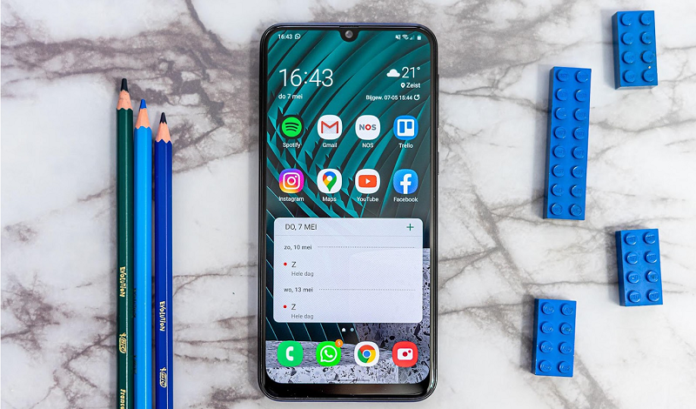Android phones have significantly evolved since the launch of the first Android phone back in September 2008. Over the years, Android phones have had many changes that have seen them rise to be the most used phone operating system.
Despite the recent chip shortage caused by the covid 19 pandemic, smartphone manufacturers continue embracing innovative trends for their phones. Innovation has always been a vital factor that helped keep Android phones ahead of their competitors in the smartphone market.
A glance at the smartphone market will reveal that Android phones are always the pioneers of most smartphone innovations. In this article, we highlight the modern Android phone trends that have been seen in most of the new smartphones.
1. High Refresh Rate Screens
A keen look at Android reviews will reveal that most Android phone makers are moving away from the conventional 60hz refresh rate screens. The two screen refresh rates currently common in the Android phone market are 90hz and 120hz.
High screen refresh rates give the user a smoother and faster experience when interacting with the phone through the screen. A high screen refresh rate also offers a significant advantage when gaming. A high refresh rate offers the gamer higher frames per second count which creates a huge advantage.
However, one drawback of high refresh rate screens that have been observed throughout their use is poor battery life. High refresh rate screens reduce a phone’s battery life because the GPU pushes more information and the screen loads a higher number of frames.
To counter this drawback of high refresh rate screens, phone makers implemented adaptive screen refresh rates. Adaptive screen refresh rate switches the refresh rate of the phone based on the application in use. If, for instance, the user is gaming, the refresh rate will be at 120hz, and when the user switches to checking social media, the refresh rate will lower to 60hz or lower.
When buying a new phone, be open to trying one with a high screen refresh rate. The smooth, riveting experience will make you proud of your purchase.
2. Better Connectivity
Other than the switch from qwerty keyboards on phones to interacting with phones through touch screens, connectivity is the second most popular change. Over the years, cellular connection has evolved from 1G, 2G, 3G, LTE, 4G, and 5G.
Though it is still not found in most Android phones, 5G is rapidly gaining momentum as more carriers set up their 5G infrastructure. Contrary to past cellphone signals that have been in use, 5G offers different types of connections under it.
The three 5G connections are:
- Millimeter Wave Band-This is the fastest 5G band. The band offers speeds that are 10 times faster than 4G. The drawback of this 5G band is that it requires one to be very close to a cell tower and with little to no movements.
- Mid-Band 5G-Unlike the millimeter wave band, the mid-band wave is more stable. This band offers speeds that are up to 6 times the speeds of 4G. This 5G band is the most stable and recommended for daily use.
- Low Band 5G-This is the baseline band for 5G connections. Most cellular plan providers implement this band during their tryouts before implementing faster bands. This band is 20% faster than 4G networks.
Regardless of their requirements in terms of proximity to cell towers, 5G connectivity continues to be implemented in more phones.
3. Alternate Form-Factors
For a long while, Android phones have had the conventional brick shape. According to most people, this form factor took the fun out of mobile phones. In a quest to make phones more exciting and unique, some Android phone manufacturers have taken to develop phones with unique form factors.
Samsung started the unique form factor movement by debuting the Galaxy Fold back in 2019. This debut made phone makers fund research projects to develop smartphones that stood out from the conventional brick form.
Over the years, we have seen more iterations of the galaxy fold and the galaxy flip by Samsung. Another mobile phone form factor that was long awaited is the rolling screen phone. Oppo revealed the rollable smartphone, in 2021. Another alternate form factor that has gained significant traction and has been taken up by several smartphone companies is the clamshell form.
It is safe to say that for Android phones, the future is full of phones with alternate form factors.
4. Bigger ROM Capacity
The first Android smartphone was launched with 256MB of internal storage capacity. Over the years, the base storage capacity for Android phones has increased as the storage requirements have increased. Android OS files are taking up more space and application files are becoming more robust thereby requiring more storage space.
Recently, we have seen an increase in the base storage capacity of Android phones from 64Gb to 128GB. This increased storage helps users store numerous memories embossed in photos and videos while also having their favorite applications installed.
5. Bigger RAM Capacity
Similar to ROM capacity, the RAM capacity in Android smartphones has increased over the years. In 2021, most mid-range Android phones came with 6GB of RAM. This figure has risen to 8GB in 2022 as applications become more demanding in terms of processing power and memory requirements.
For flagship Android phones, the available RAM capacities range from 12GB to a whopping 18GB of RAM. The extreme RAM capacities are good for users who are looking to use their phones for competitive gaming. Buying a phone with high RAM capacity is also a good mechanism for future proofing your device against more resource-intensive applications.
For most people, RAM is the factor that they put more consideration into. To be on the safe side, avoid buying any Android phone that has a RAM capacity of less than 8GB.
6. Under-Display Cameras
Phone manufacturing companies are continuously looking for ways to make their mobile screens more immersive. We have seen more companies try to “hide” the front cameras under the display to create a more immersive screen.
This trend is still in its early stages, however, and companies are still working on finding ways in which the under-display camera will not lack good quality.
Conclusion
Innovation is and will continue to be at the center of the Android phone market. In a few years, you can be sure that the innovative technology trends listed above will be a common sight and new trends will have cropped up. However, as we navigate the current trends, be open to trying them out and get a feel of the evolution of Android technologies.








